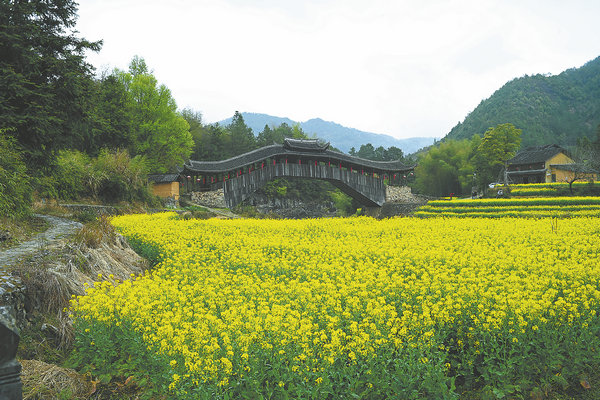

When heritage activists met Dong Zhiji in 2003, whose name they'd found on a bridge built decades earlier, he was 78 years old. By then, building bridges was a distant memory, something he'd done in a previous life. But the conservators were relieved, as they'd finally found someone who still had the skills to build the endangered structures.
Wooden arch bridges were once widespread in the mountains of what is now southern Zhejiang and northern Fujian provinces, but since the 1960s, they have gradually been replaced by concrete and steel, leading the craftspeople who made them to turn to other professions. By the turn of the millennium, when they regained their cachet, those able to build the bridges seemed to have vanished.
That's why finding Dong was an amazing feat. Although he last built a bridge about 60 years ago, he still remembered the techniques, and in 2004, he had the chance to practice those skills on the Tongle Bridge, and train several apprentices in the process.

Zhong Xiaobo, director of the Wenzhou Covered Bridge Culture Society, helped build the Tongle Bridge. He has devoted over two decades to protecting wooden arch bridges, and says Dong's knowledge on wooden arch bridges has made the revival of the then-endangered craft possible.
On Dec 15, the traditional design and practices for building Chinese wooden arch bridges, listed in 2009 as an Intangible Cultural Heritage in Need of Urgent Safeguarding, was transferred to the Representative List of the Intangible Cultural Heritage of Humanity, marking its remarkable revival.
Zhong was overwhelmed by the news. "This is a reward for our efforts in protecting the bridges and passing on skills. It was a long, arduous journey, from no craftsman to one, from one to many. Finally we see the first rays of dawn."